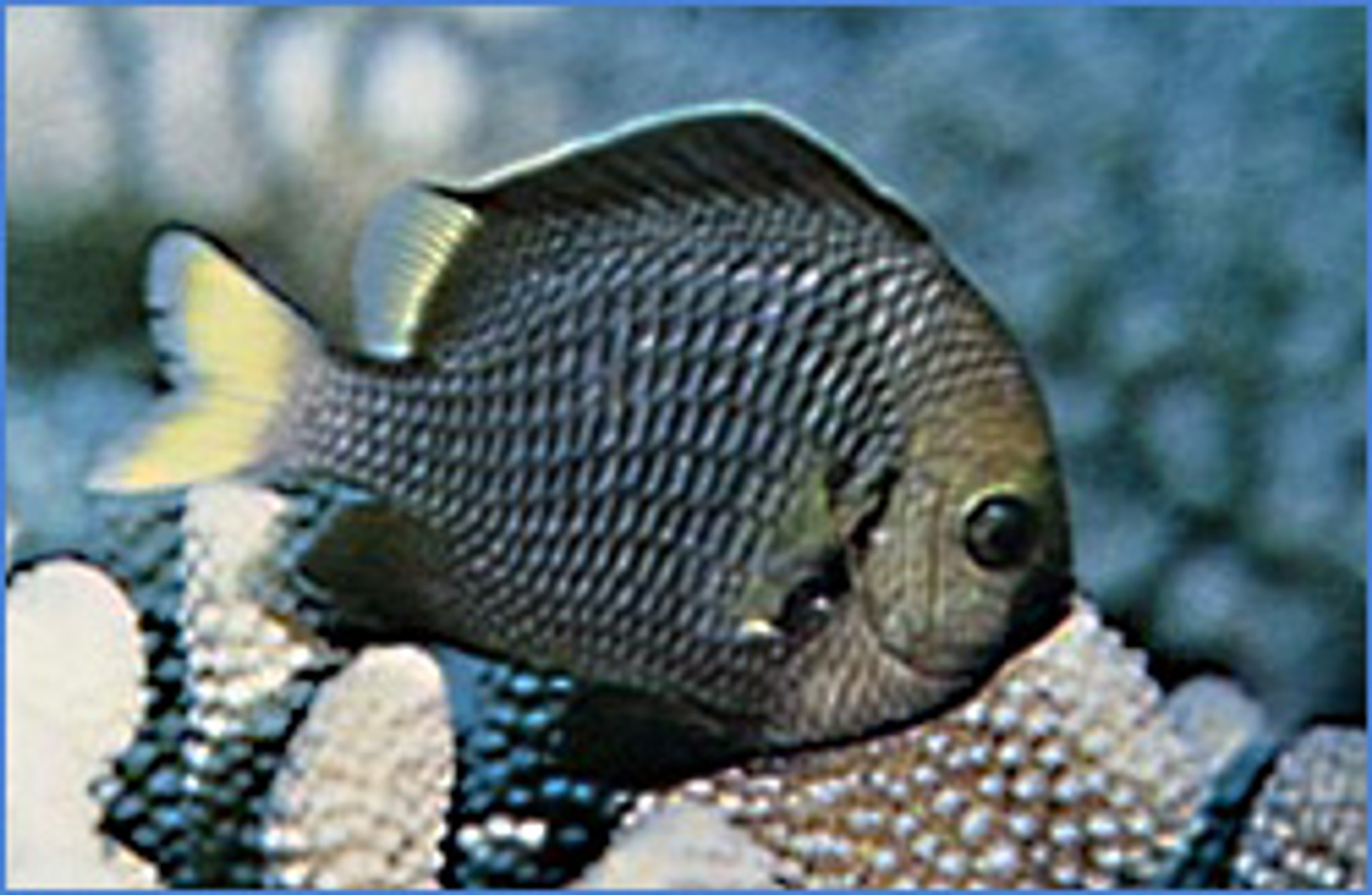The Yellow Tail Dascyllus

The Yellow Tail Dascyllus: A Great Choice for Beginners
When aquarists first enter into the realm of keeping saltwater fish, it is critical that they are successful. In doing so, they must be carefully guided through the process and requirements necessary in order to be successful. This will include obtaining the right equipment, learning the best husbandry methods, and choosing aquarium inhabitants
A major portion of the success will rely on how long and how well the fish survives. Choosing a difficult species that should only be cared for by experts will almost always result in disappointment. It is critical that beginners are guided towards hardy and easily kept fish to continue their interest in the hobby. Damselfish are perhaps one of the best choices for beginners as they are extremely durable, feed readily on a variety of foods, and also have very interesting personalities.
The Yellow Tail Dascyllus Damsel (Dascyllus flavicaudus) is one of the best choices for beginners. Being known to survive total system crashes, these fish are very tough. When juveniles, they exhibit a bright yellow tail, which slowly fades to a more dull yellow as it matures. They reach approximately 4-5 inches in total length.
As juveniles, the Yellow Tail Dascyllus spends much of its time congregating in groups near and within the branches of corals. As they grow older, they move away from the protection of the coral and find an area to inhabit, typically a rocky patch of a reef with ample hiding spots from potential predators. Once this location has been found, these fish can be extremely aggressive towards just about any other fish that comes near, especially smaller damsels.
Due to their territoriality, we suggest the Yellow Tail Dascyllus be placed in an aquarium either singly or in a male/female pair. Other tank inhabitants need to also be semi-aggressive as peaceful inhabitants will be pestered.
Juveniles are often recommended to be safe if kept in groups, however we advise against this. Due to the hardiness of the species, chances are most of them will survive to adulthood at which point, especially if they are in a smaller tank, they will most likely fight till the death to establish dominance.
They are omnivores in the wild, so their captive diet should consist of a variety of meaty foods, (brine shrimp, mysid shrimp, etc.), frozen or dry herbivorous preparations, and flakes. Vitamin-enriched foods or food soaked in vitamins will help to keep their bright coloration.